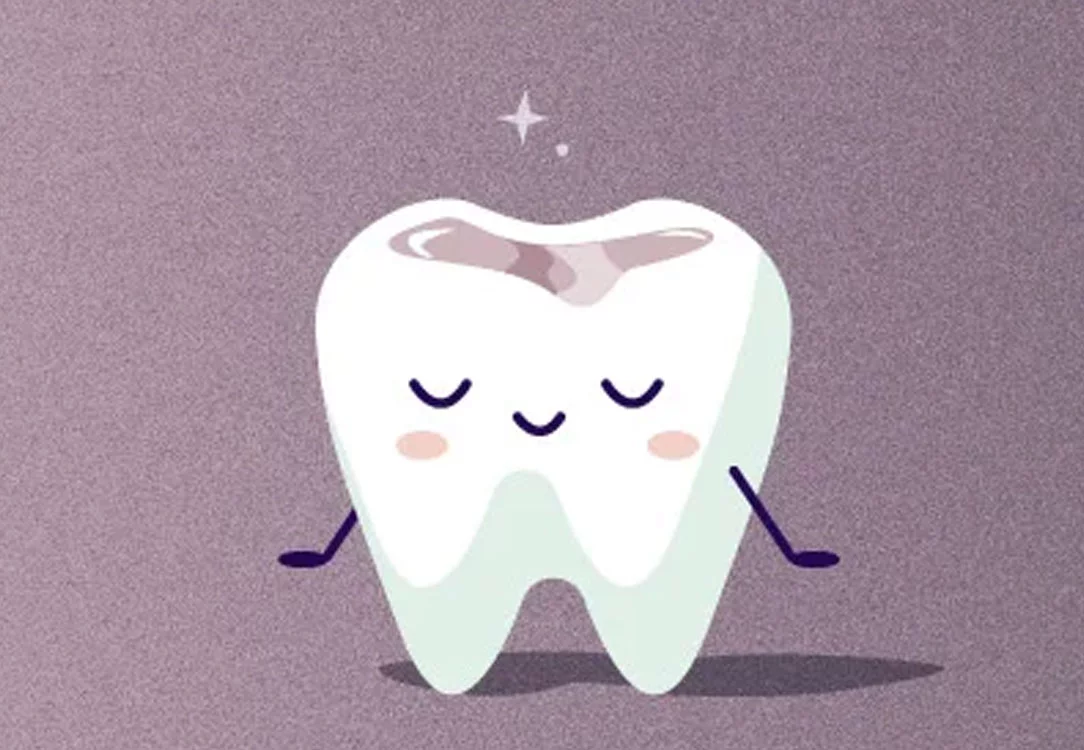Good oral hygiene is important because cleaning your teeth helps prevent cavities.
If you do not brush your teeth, bacteria will start feasting on any sugars or starches left between or around your teeth from the foods you eat. This bacteria produces a sticky substance called plaque that creates a thin film over your teeth. You may feel this film on your teeth if you forget to brush your teeth before bed. It can be easily scraped off, but it will eventually harden if not removed within a few days.
Once plaque hardens, it is called tartar or calculus. With a hardened safe haven found in the tartar, bacteria can continue to eat sugars, producing acid that begins to form holes in the enamel of your teeth. This is how a cavity starts to develop. If left untreated, the cavity will likely continue to decay, becoming deeper and possibly painful. Once discovered, a dentist will remove damaged parts of the tooth and fill this hole with a dental filling.

What Is a Dental Amalgam Filling (Silver Filling)?
Benefits
- Affordability: Without insurance, you can expect to pay between $100 and $360 for a tooth to be filled with dental amalgam, depending on how many surfaces of the tooth are affected by decay. Dental amalgam fillings can cost about half as much as composite fillings and even 1/10 as much as gold fillings, making them the most affordable dental filling option.
- Toughness: Dental amalgam fillings can withstand daily chewing pressure while remaining intact.
- Durability: Often lasting between 10-15 years, silver-colored amalgam fillings are some of the longest-lasting fillings available.
Risks
As with most medical interventions, there can be risks associated with a procedure, and it is important to know these risks, regardless of how rare, so you can make an informed decision. The presence of mercury in dental amalgam fillings causes some people to question their safety. While mercury poisoning is a real thing, the American Dental Association reports that extensive studies have been made to test the safety of the mercury levels in silver amalgam fillings and that the CDC, FDA, and WHO all approve of their use and their safety.
However, it is still reported that about 1% of patients who receive dental amalgam fillings have varying allergic reactions to the mercury in the filling. Other risks include:
- The amalgam can discolor the rest of the tooth, causing it to turn a grayish color.
- With hot and cold liquids, the amalgam filling can expand and contract, which can cause the tooth to crack. Amalgam fillings have a higher incidence rate of fracturing in these cases when compared to other cavity fillings.
- With amalgam fillings, there is a risk of the dentist needing to remove more of the tooth in preparation for receiving the filling.
How Long Does an Amalgam Filling Last?

Replacing an Amalgam Filling
When a filling reaches its expected longevity, you may develop small cracks in your tooth from the filling expanding and contracting. This lets saliva, food, and bacteria get under the filling and can cause more tooth decay, or you can even develop an abscess. Because of this potential, it should be stressed how important regular appointments with your dentist are. Your dentist will check your fillings at each cleaning so you can be sure no new damage occurs.
Alternatives to Amalgam Fillings
Taking Care of Teeth With Fillings
Directly after you have a cavity filled, your tooth will most likely be sensitive. Your dentist will tell you that you can not eat solid foods for about 24 hours after having an amalgam filling placed in your tooth. Other fillings have different time requirements before they have fully set up. Composite fillings, however, will set while still in the dental chair, so there is no waiting until you can eat after having this type of filling put in.
For a few days, after you get a tooth filling, you should avoid hot or cold liquids that may cause the filling to expand or contract, causing you pain. There is also a potential of dislodging the filling if you begin eating hard or sticky foods too soon. To properly care for a new tooth filling, try your best not to chew with it in the first several days by chewing on the opposite side of your mouth.
Find a Dentist Near You
If you have a cavity or if you need to replace amalgam fillings, having a dentist you trust is crucial. To find a list of qualified dentists in your area, check out Smile Generation's Find a Dentist tool. Catching a cavity early means less decay. Be sure to make all your dental appointments so you can keep your mouth healthy and your dental fillings in place.
Find your trusted, local dentist today!
Sources
Smile Generation blog articles are reviewed by a licensed dental professional before publishing. However, we present this information for educational purposes only with the intent to promote readers’ understanding of oral health and oral healthcare treatment options and technology. We do not intend for our blog content to substitute for professional dental care and clinical advice, diagnosis, or treatment planning provided by a licensed dental professional. Smile Generation always recommends seeking the advice of a dentist, physician, or other licensed healthcare professional for a dental or medical condition or treatment.








